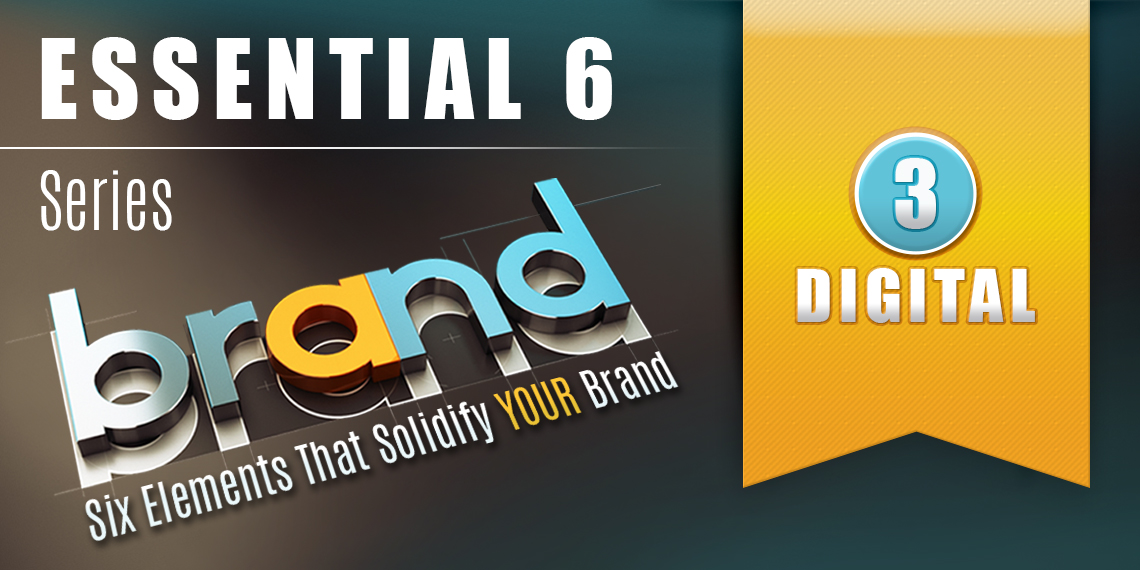
What are the secrets to creating YOUR brand?
In this compelling series, we will divulge the secrets of establishing your brand and the 6 essential components that build your image.
3. DIGITAL:
Everyone wants digital. But what exactly is digital?
To some, anything digital can seem ambiguous and intimidating at the same time.
According to sas.com…
“Digital marketing is the promotion of products or brands via one or more forms of electronic media.”
Lee Odden from TopRank Marketing goes on to say…
“Digital marketing can be utilized through various channels like the Internet, social media, apps, etc.”
The best way to look at digital is to separate it into its various forms. Let’s start with these three. (They will keep us busy enough as there is a lot understand!)
Let’s focus on these three, even though digital marketing is constantly growing. We could dive deeper into online video, online advertising, paid promotion through social media, and a myriad of other digital opportunities, but they all exist within these three. Most digital platforms perform outside of your community and bring prospects to you. But more than ever, these formats are being used onsite for some dramatic advances in residential service, convenience, and retention. The key is to understand and harness the full potential of what these digital allies can accomplish.
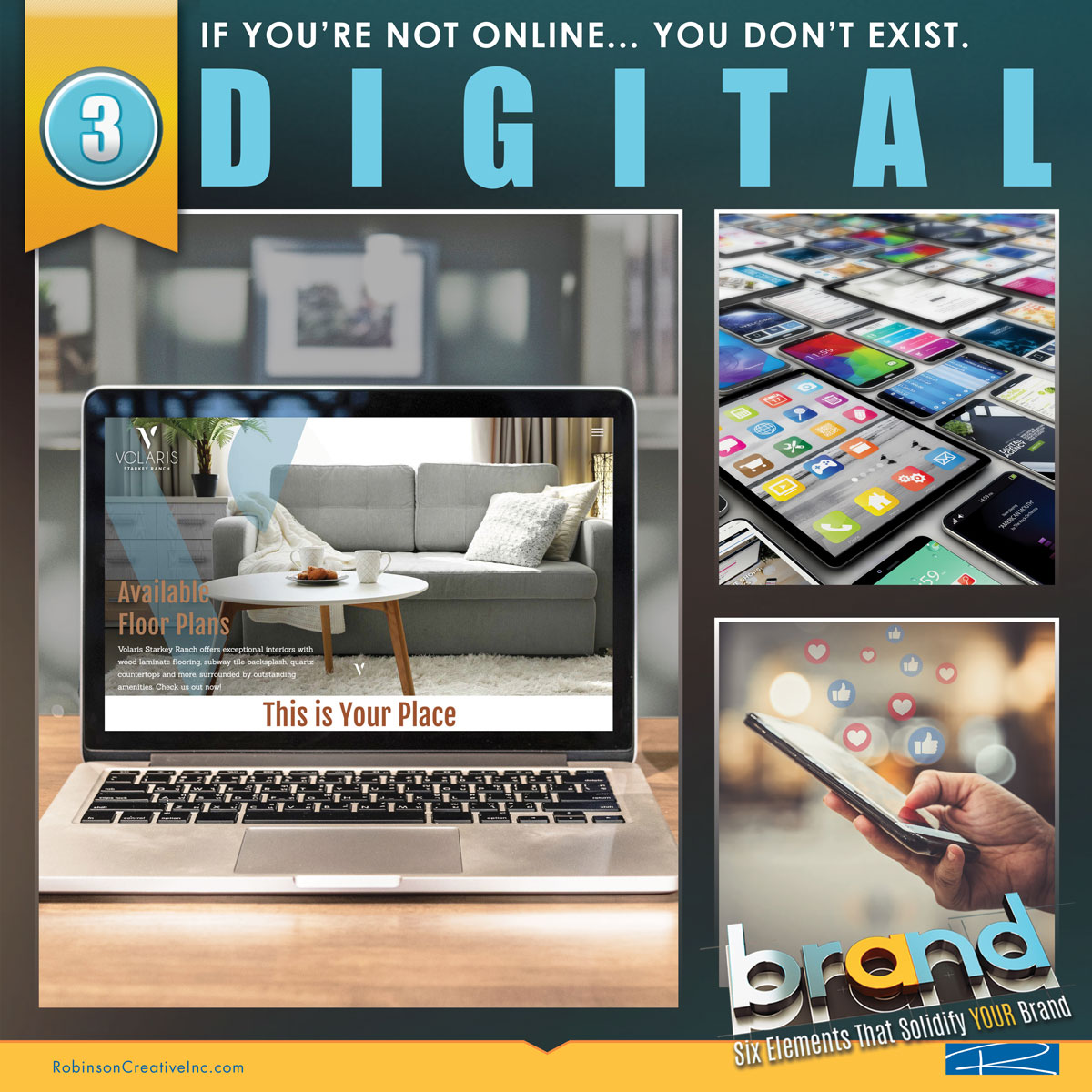 First, let’s look at the modern website.
First, let’s look at the modern website.
There is no way we can cover every aspect of every digital avenue, but having a website is a MUST. The Internet never closes. It’s available at the exact moment your prospects are looking for you. And… your website provides a visual experience of what life is like in your community. Showcasing your featured plans, photos, and amenities of your neighborhood & its benefits can influence potential residents and encourage them to begin the conversation with you.
Corporate or Management Company sites often make the mistake of consistent inconsistency. In other words, their brand is not clear, their purpose is divided, and their message is more about the company than the prospect. Management companies want their brand to be prominent and the property secondary. If you fall into this camp, ensure your logo is at least incorporated and, possibly, your brand colors.
In any case, websites should be clear and simple to navigate. Test the design with a variety of people so you know the average person can navigate through the site.
Here is a 10-Tip Checklist from ActiveEndurance.com: — along with our 2¢
- 1. Have a memorable web address — Short and sweet is usually a safe idea.
- 2. Get your website to rank in search engines —You can’t buy this. It takes skill.
- 3. Engage your visitors —Does your front page have images or content that sparks more interest?
- 4. Have clear navigation —Make sure they can find what they are looking for quickly.
- 5. Update your content —Google doesn’t like stale content. Neither do your visitors.
- 6. Offer online discounts —Not only is this attractive, but it tells you something about your prospects.
- 7. Make “calls to action” prominent —“Thanks for visiting… Do This NOW! ”
- 8. Keep branding consistent —A brand is more than a logo. It’s who and why you do what you do.
- 9. Enable social sharing and social media —Sharing is a good thing!
- 10. Create a mobile version —According to Revel.in, “91% of all apartment residents are likely to use a mobile device the next time they are looking for an apartment.”
A website also expands your reach far beyond your local area. You can generate a much larger potential customer base not only beyond your city but internationally. Your presence in the global community enables customers to experience your community from anywhere around the world. Additionally, your website can log market data, traffic, and website performance. In addition, simply having a website builds credibility and customer confidence.
One major element that MUST be considered is mobile optimization. Whether your site is responsive, provides an alternative mobile version, or is simply a “mobile-first” design, it’s essential that mobile devices are able to display your content properly. Since smart phones and mobile devices are utilized for everything today, your site must easily translate into a mobile format or risk losing most— if not all— effectiveness. It is difficult and frustrating for a user to navigate through a traditional site even on the most advanced smartphone… and that’s not the first impression you want to make for your business.
“93% of small business websites are not mobile optimized and will not work properly and/or will not be user-friendly on smartphones. This is vital because 88% of consumers who search for a type of local business on a mobile device call or go to that business within 24 hours.” (Omaha).
***Effective Business Websites – Why One Will Help your Business Succeed
Today’s multifamily sites incorporate or link to property management software and are designed to show instant availability to prospects, include interactive area maps, allow residents to submit service requests or pay rent through portals.
An Ingenious Multifamily Site Expands Their Reach With The Following:
- Uses the Net to Draw Prospects to the Community
- Incorporates Site Links in Emails, Social Media and Print
- Constantly Updates and Manages Website SEO
- On-Going Maintenance to Ensure Site is Always Updated
- Incorporates the Site Address on All Area Location Sites
- Encourages Site Interaction with Existing Residents
- Regularly Includes Video to Engage Visitors
Robinson Creative can build an entire site or work closely with your property management software company to ensure your site connects with your brand while being most effective.
Social Media.
WhatIs.com says…
“Social media is the collective of online communications channels dedicated to community-based input, interaction, content-sharing and collaboration. Websites and applications dedicated to forums, microblogging, social networking, social bookmarking, social curation, and wikis are among the different types of social media.”
Most traditional online media include social interaction components, like comment fields for users, etc. In business, social media is used to market products, promote brands, connect to current customers, and foster new business.
Social media marketing (SMM) takes advantage of social networking to help a company increase brand awareness and expand customer reach. The goal is to create content compelling enough for users to want to share it with their social networks.
Social CRM (customer relationship marketing) can be a very powerful business tool. For example, establishing a Facebook page allows people who like your brand and the way you conduct business to “Like” your page, which creates a venue for communication, marketing, and networking. Through social media sites, you can follow conversations about your brand for real-time market data and feedback.
In short, social media:
- Can follow conversations and “mentions” about your business to collect market data and feedback.
- Can be used to conduct market research and improve business operations.
- Enables your company to easily respond to positive and/or negative feedback.
- Allows customers to share the experience with your company.
- Creates and nurtures customer relationships.
The danger we often see in multifamily social media is that pages are started but never fully utilized or updated. This leads to inaccurate information, outdated posts, and criticism (or unfollowing) from followers. Social Media takes time to build, and it’s important to realize that there is a commitment that must be taken seriously for positive results. Without a clear strategy and consistent effort, social media can become overwhelming and fail to produce desired results. With the growing number of social networks available, it has become increasingly more difficult to manage content on every channel. Fortunately, social media management apps can be an effective tool to help make things more—well… manageable. Social media management apps allow you to schedule posts, message fans and clients, track brand mentions, analyze traffic, and monitor company data on multiple social platforms. The best part, this can all be done from just one app instead of having to open each social network individually! They save not only time and repetitive posting, but your sanity as well. Such apps include Sendible, Social Booster, Hootsuite, Buffer, Sprout Social, and many more.
Here are some great ideas to cement your social media efforts….
- Pick Three! We recommend the most popular: Facebook, Twitter, and Instagram.
- Assign A Social Media Captain. These duties should be the responsibility of one person in the office.
- Post At Least 2 Times A Week on All Platforms.
- Get Creative with Posts!
- Engage Residents with Contests, Events & Gatherings.
- Start Social Media Resident Groups (Single, Sports Guys, Crafts, TV Show Fans, etc.) And Assign Residents as Captains.
- Use A Platform Like HootSuite or Buffer to Organize All Social Media in One Place.
- Encourage Residents to Contribute and Comment.
- Promote Your 3 Social Media Networks in All Other Media & Marketing.
- Get A Plan in Place! Outline A Month in Advance So Every Week is Covered and Scheduled.
- Monitor Comments Daily and Respond Appropriately.
- Promoting Your Page to Like-Minded Individuals Through Facebook Boosts and Paid Promotions Expands Your Reach.
Mobile Devices
We have already established that all websites must be mobile optimized. Smartphones, tablets, and other mobile devices have become a standard necessity. We are emotionally connected with our devices and have them near at all times. These devices extend our reach. We utilize them for emails, texts, social media, video, music, photos, GPS, etc. And now, with the introduction of Apple Pay and others, mobile devices are even replacing our wallets. Therefore, it is crucial that your community develops a mobile presence.
“…more and more consumers, especially teens and college students are using their smartphones and tablets as their primary computing device and their sole device to access email and other productivity apps, like Google Docs, Quip, Slack and the Microsoft productivity suite.”
Media, Productivity & Emojis Give Mobile Another Stunning Growth Year
Apple coined the growingly factual phrase, “There’s an app for that!” And it’s no wonder that the convenience of so many apps is changing the way we do just about everything. From monitoring your health to purchasing the latest fashions, locating the area’s hottest restaurants to delivering a hot pizza… Games, Travel, Business, Customer Loyalty, Creative Photo Imaging, etc. Apps are built to be more convenient and easily accessible on mobile devices and may someday even take the place of websites.
Key App Usage Statistics:
- The time spent per user with digital media on mobile in US daily in 2018 – 11+ hours
- The total number of iOS app downloads in 2018 – 30 billion
- The total number of Android app downloads in 2018 – 76 billion
- The app category people utilize the most in 2018 – Social Media (67% of users)
- The age group that spends the most time on apps monthly – 18-24 (86 hrs/mo)
Most leasing consultants use iPads/tablets or smartphones to present their community to prospects. It has become customary. However, there have only been a few management companies take the leap to apps. If they have created a company app, they are usually clunky or cheap looking. We believe once management companies discover the power of apps, they will become the new standard. Since prospects and residents live on their smartphones, this is the new way to expand your reach and strengthen resident retention. In fact, according to RENTCafé.com, when asked how they felt about the idea, over 80% of renters believed that an online resident portal is a convenient feature, even a must-have.
Robinson Creative has been researching new technology in mobile apps and will soon introduce much-needed industry services. Utilizing digital technology will catapult multifamily into a new age. Using Apps will give communities an edge and introduce a host of new resident services.
What A Community Can Do With An APP!
- Present Community to Prospects
- Provide GPS Services
- Introduce Sister Communities
- Push Notify Prospects of Availability
- Prospect Application Services
- Prospect Reservations
- Resident Services
- Social Group Connect
- Push Notify Residents
- Interactive Area Services/Dining/Shopping
- Resident Contests/Games
The NAA (National Apartment Association) states in their article, “Gaining Mobile Momentum”…
“Expect to see your residents requesting these types of mobile-based conveniences. To beat the crowd and improve retention, be proactive about how you can enhance your mobile application services, exciting your residents, improving your maintenance protocols with more timely access to information, and bettering your bottom line.”
Continue to Number 4: Essential 6: Community Signs!
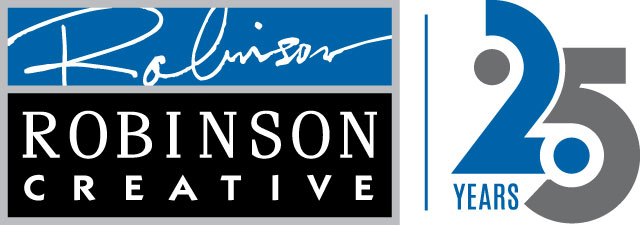

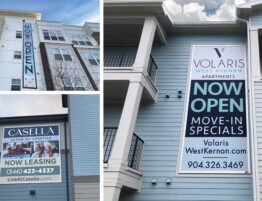

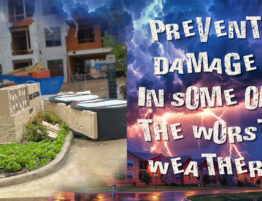


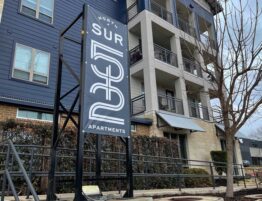
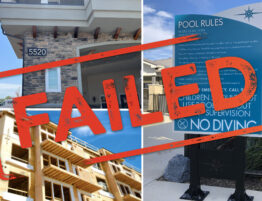
Write a comment: